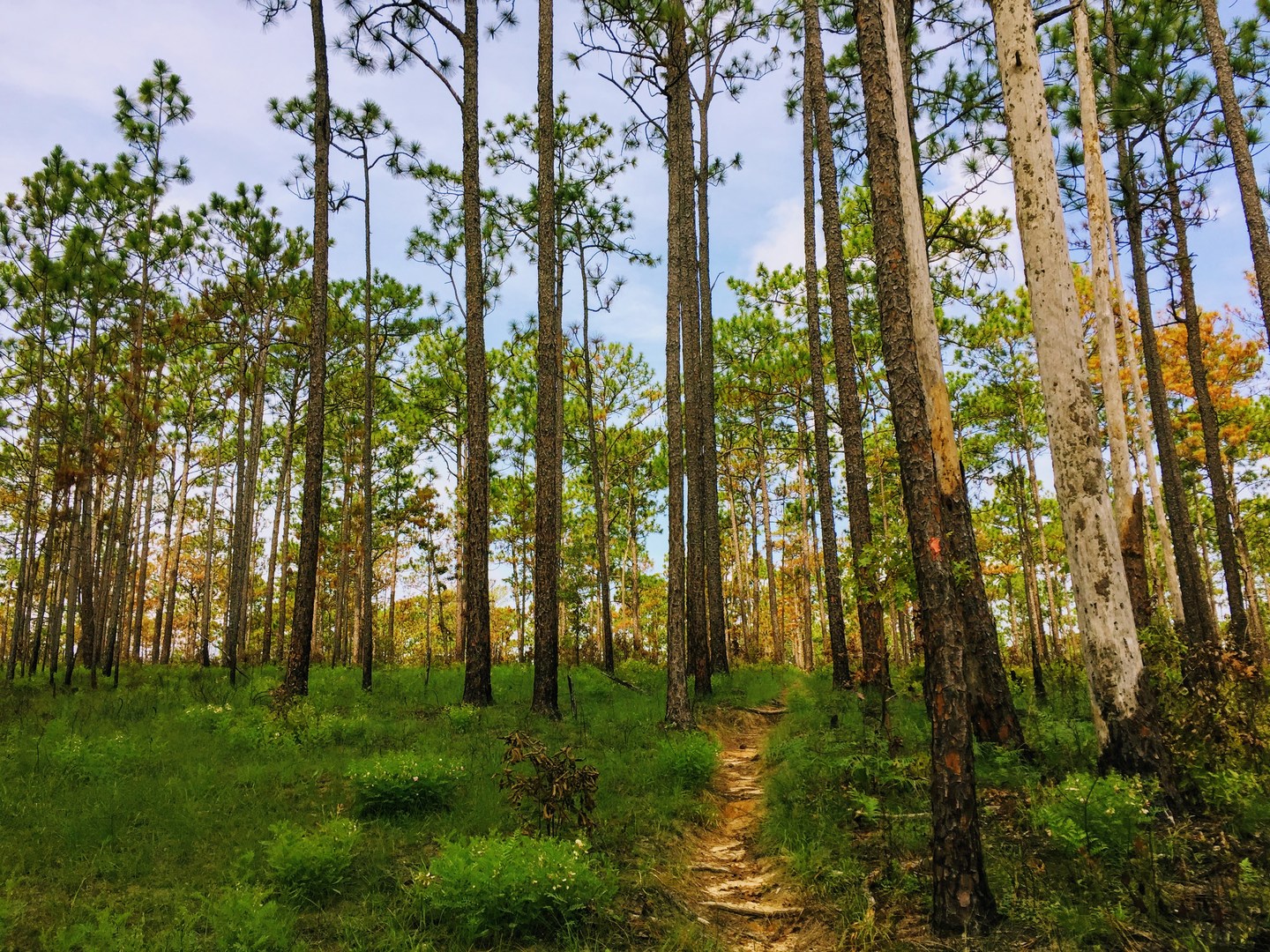You are here
August is certainly not synonymous for hiking in Florida, but if you catch a break from summer thunderstorms and you need to satisfy your outdoor itch, then Torreya State Park is a great pacifier. Torreya State Park is named after the rare and endangered Torreya Tree. Nestled in the back roads of Liberty County you’ll find a rare experience that takes you on a journey where you’ll start to question whether you are even in Florida. High bluffs overlook the Apalachicola River, the largest river in Florida, where 14,000 million gallons of water flow through each day.
Dubbed the “Mountains of Florida,” Torreya State Park takes hikers on over 16 miles of trails spanning steep ravines and some of the most challenging hiking trails in the state. The trails double as a rich lesson in Civil War history with informational signs that mark various battlefields. There are two main trails: the Torreya Trail, which is 6.8 miles, and the Torreya Challenge, which is connected to the Torreya Trail by a short trail and spans over 5 miles. This review will focus on the Torreya Trail.
The trailhead is on the west side as soon as you enter the main gates. There is a small parking area, but you are required to drive past this and pay at the self-service station in order to secure your day pass. The fee is $3 per vehicle, and backpacking with access to primitive campsites is $5 per person (children under age six are free). Even though the trailhead is the starting point and provides access to potable water, it is best to follow the road all the way down to the Gregory House and start your hike there. The Gregory House provides you with a beautiful vantage point of the Apalachicola River, and it has restrooms. Starting here means you will reach the main trailhead at about the halfway point of the hike. Potable water is scarce unless you venture off the trail to one of the picnic areas or campsites, so the trailhead provides you with an opportunity to refill your containers if you did not pack enough. If you are hiking during the warmer months, you will need plenty of water to counteract the effects of the humidity and heat.
The majority of the hike is under the canopies of hardwood hammocks and floodplain forests, but roughly 15% to 20% of the hike takes you through pine flatwoods, where the sun and heat can be intense. The ravines are steep and rise over 300 feet to bluffs that overlook the river. There are side trails that connect you to the river where you can take a cool dip. Just remember you are in Florida, the natural habit of the Florida alligator. Use caution if you are hiking with small children and dogs.
The hike is pet friendly as long as they are kept on a leash, but the up and down climbs are tiring for dogs. There are several fresh water creeks where your dog can cool off and get a fresh sip. Take caution and watch for snakes that may also be nestled near the water's edge. Also, make sure to check your pups (and yourself) for ticks after the hike, as they are prevalent and tiny. Other hazards to keep an eye out on are yellow jacket nests, which can be found in the ground of the sandy terrain, and mosquitoes, yellow flies, and velvet ants, all of which unleash painful stings if encountered. If you have allergies, take precautions. Probability of encounters are higher during the summer months. Be sure to bring bug spray, shoes with closed toes, and a trekking pole. Note that cell service is limited in this area.
Overall, this is a must-experience hike. The changes in the terrain and ecosystems are incredible, and they are all packed into a hike that is less than 7 miles. You’ll experience rare and exciting flora and fauna and breathtaking views. Happy hiking!
Logistics + Planning
Current Weather: Powered by Dark Sky






























Comments
Sign In and share them.